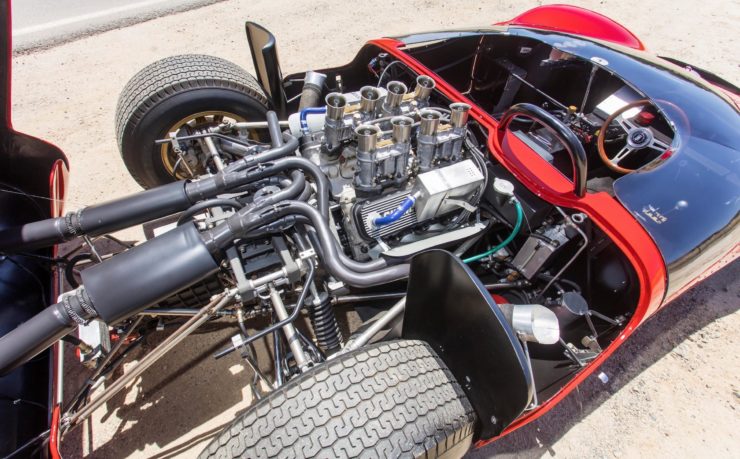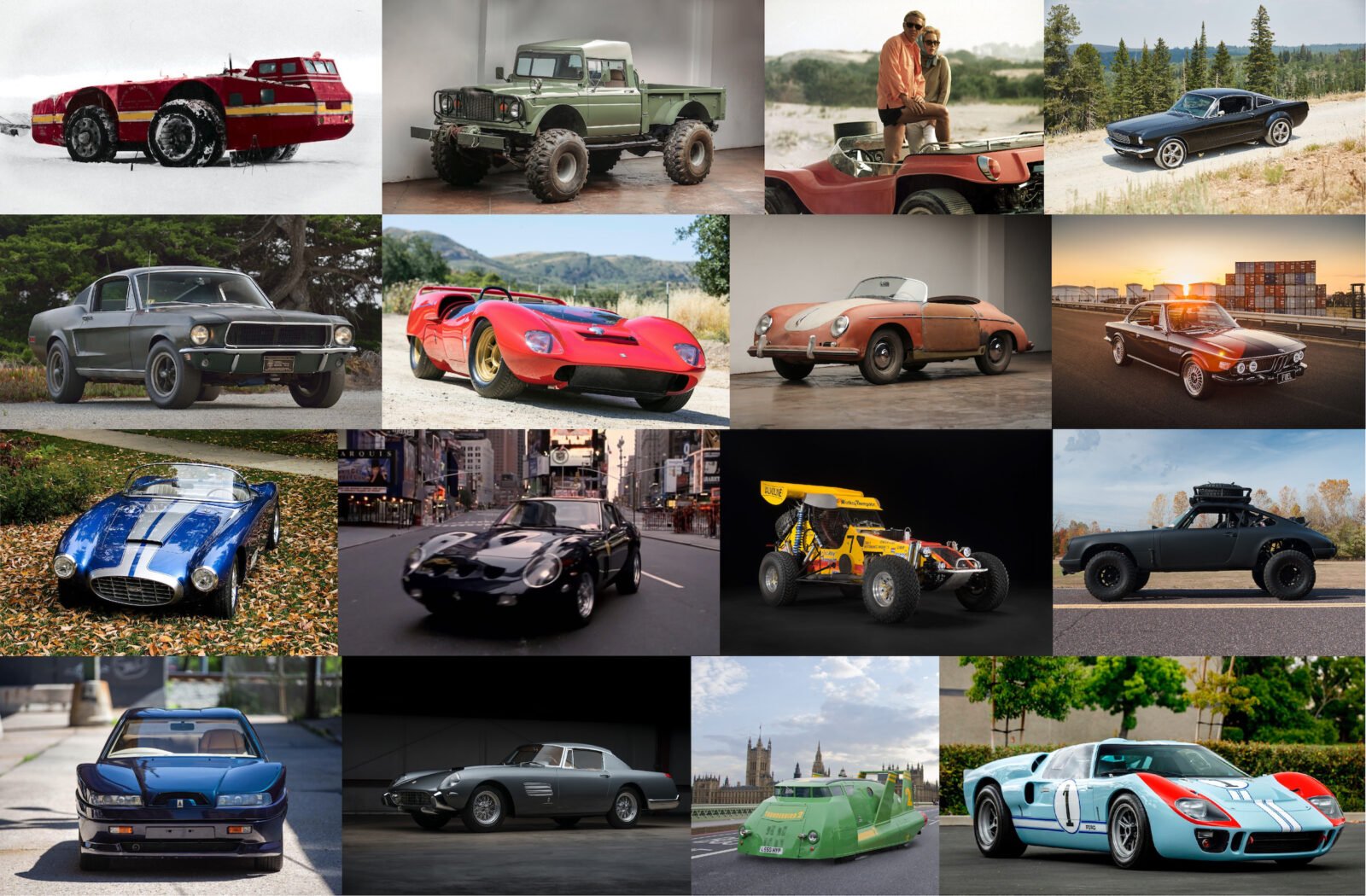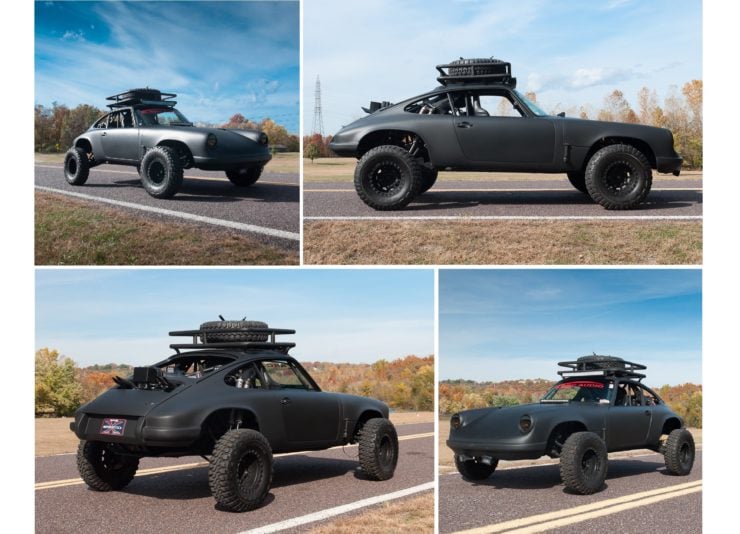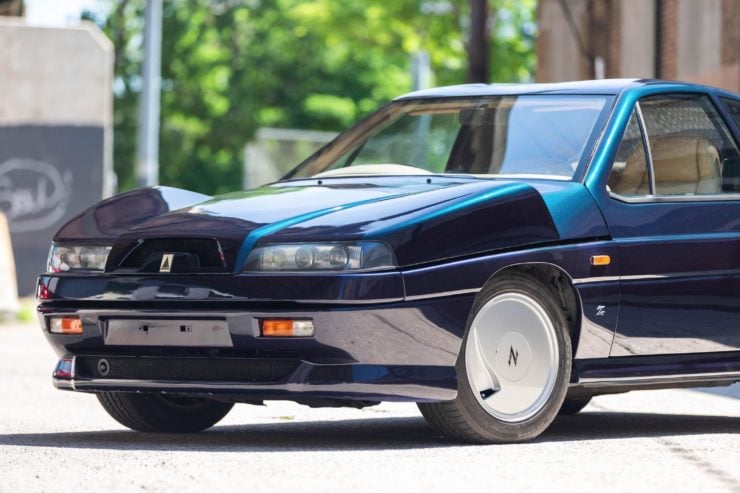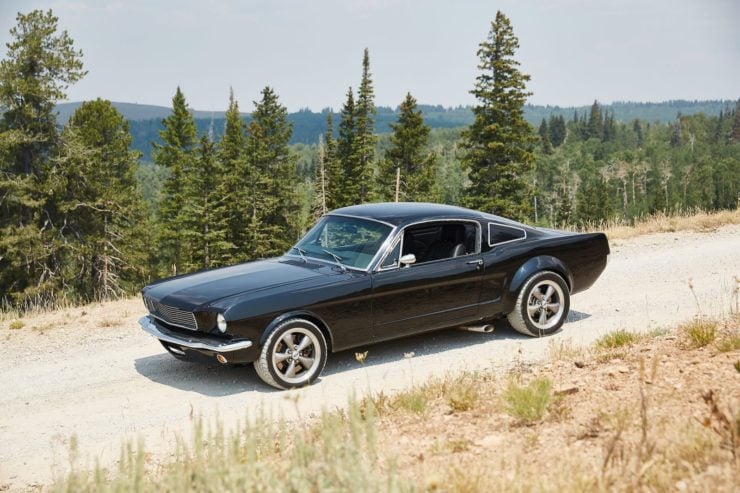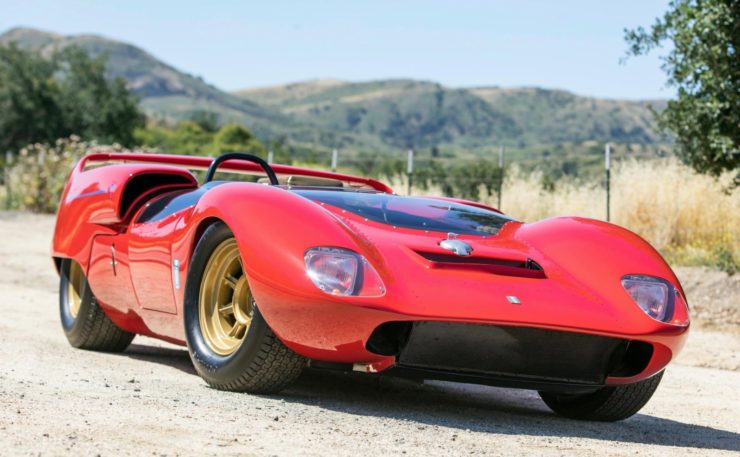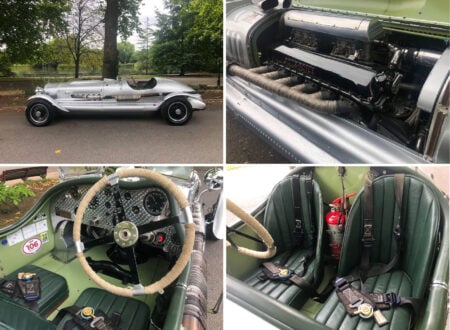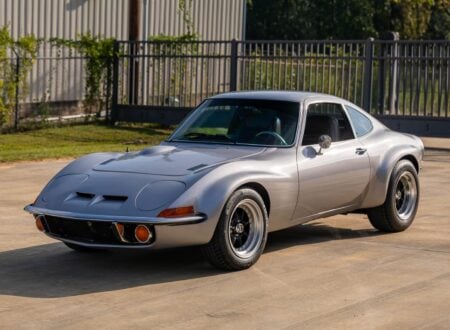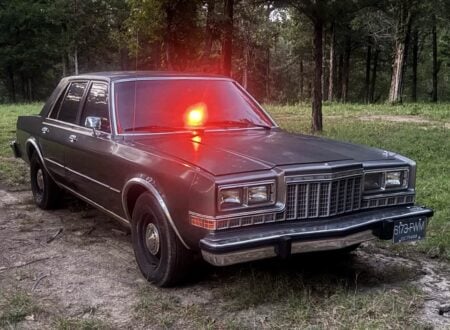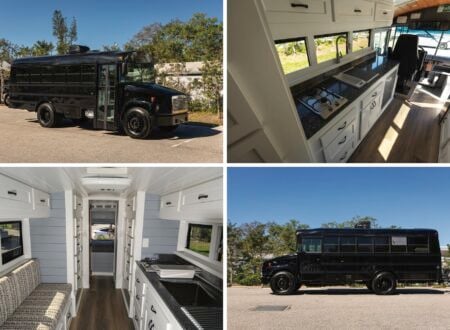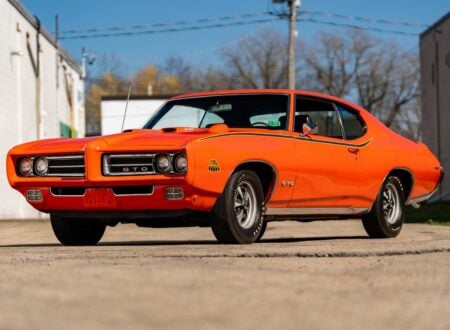Each year we compile a list of the most popular cars on Silodrome from the previous 12 months, we rank them in the order of their popularity, and as always, there are a few surprises in the list.
For the first time in the almost 10 year history of Silodrome the top two cars are both the same make and model (though different years), and for the first time there’s a replica in the list, albeit one with a hefty dose of Tom Cruise Hollywood magic.
We’ve compiled the list below in reverse order, and there’s an honourable mention at the bottom that almost made it into the list but missed out by just a few hundred clicks. Each vehicle has an excerpt from its original feature article on Silodrome, with a link out to read the full text if you’d like more information on it.
And now with no further ado, here’s the Top 19 Cars of 2019:
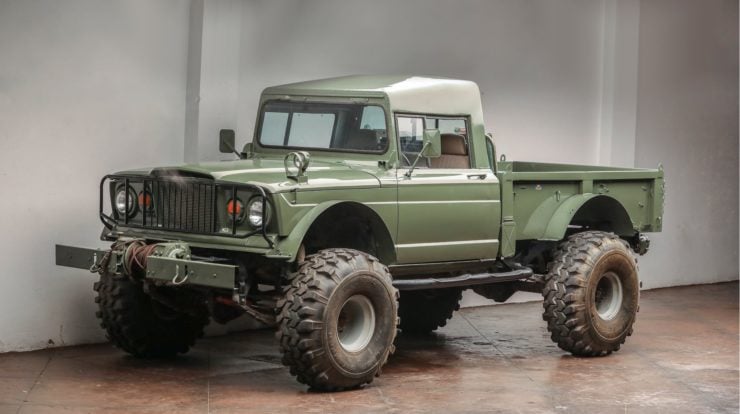
#19 – THE CUSTOM KAISER JEEP M715 PICKUP TRUCK
The custom Kaiser Jeep M715 pickup truck you see here is one of the better built modified versions we’ve seen in recent memory. It’s now powered by a General Motors 350 cu. in. (5.7 litre) V8 engine offering considerably more horsepower and torque than the original inline-6.
This V8 is mated to an Oldsmobile automatic transmission to make daily driving much easier, it also means it’s now highway drivable as well – something that can be a struggle in the original 6-cylinder 4-speed vehicle.
Up front it rides on a Dana 60 axle and there’s a Dana 70 axle in the rear, both ride on new heavy duty leaf springs and the original drum brakes are kept as is the 2 horsepower front-mounted winch. The look of the truck is transformed by the 42” Super Swamper tires designed for off-road use but still more than capable of being driven on the road.
See the original article here.
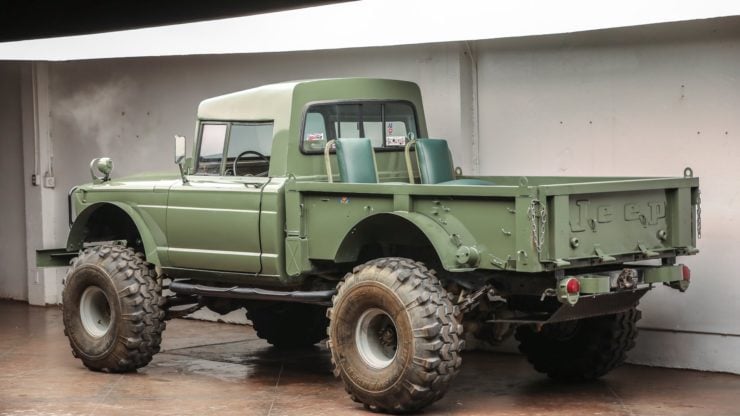
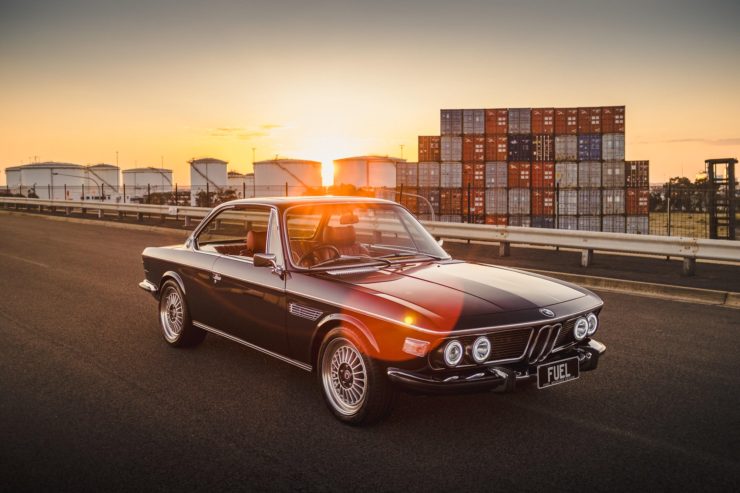
#18 – THE FUEL BESPOKE DESIGN CUSTOM BMW E9
This article was written by John Ward of Fuel Bespoke Design – the builder of this immaculate custom BMW E9 named “Von Trapp”. When possible we like to bring you the story of a vehicle in the words of the person or people who built it, so you get direct insight into their thought process and methodology.
I found a sorry looking BMW 2800 CSA in a builder’s yard in NSW, Australia – the car had no engine or transmission but did look reasonably complete otherwise. I knew it would have some rust issues, they all do, back in the day Karmann the coachbuilders BMW outsourced to didn’t really focus on rustproofing the vehicles.
Having just completed the BMW 2002 aka “The Red Baron” I had a good idea of the journey I was in for, but this time I wanted to step it up a little. The E9 is in my opinion, one of the most beautiful cars to come out of BMW so I didn’t want to mess with the aesthetics but I did want to give it a new lease of life with more than a few hidden secrets.
After a complete strip down, it was off to Redistrip for a chemical dip to take it back to bare metal as it’s so much easier to repair a stripped clean body. She was pretty bad, just about every panel would need either repair work or replacement.
See the original article here.
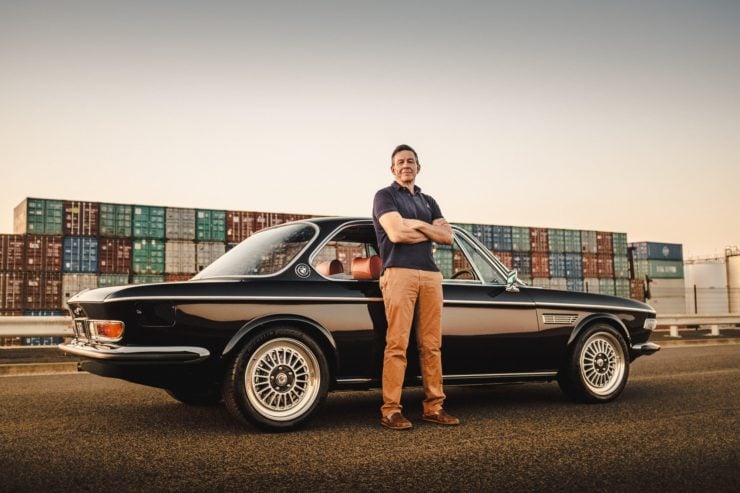
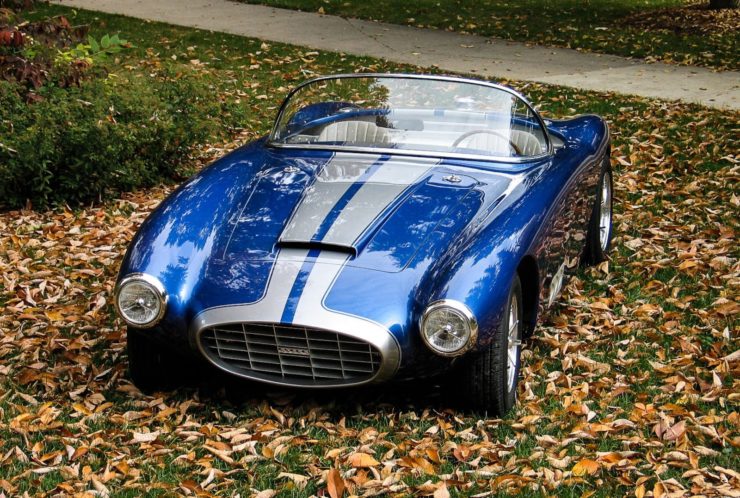
#17 – THE BYERS SR100
The 1950s America was the world leader in fibreglass kit car design and construction. The composite material must have seemed like a gift from the heavens, allowing small scale car manufacturers to create beautiful, complex body designs without needing to handcraft each car from aluminum alloy or steel – a huge time saver.
One of the leading lights of this fibreglass car movement was Jim Byers. He had previously teamed up with Dick Jones to create and build the 1953 Meteor SR1 sports car but when Jones moved interstate Byers set up on his own. He improved the design and called it the Byers SR100, each body was made of hand-laid fibreglass and designed to fit a 100 inch wheelbase.
Customers who bought a Byers SR100 body would typically either build or source their own drive train, chassis, and running gear, finishing the car off in their own garage.
The SR100 and the SR1 on which it was based were designed to accommodate the engine in a front-mid engine configuration allowing for optimal weight distribution. The fibreglass body tipped the scales at just 125 lbs, and the completed car would typically weigh in at a little over 2,000 lbs and be fitted with a V8 capable of 200+ hp and over 200 ft lbs of torque.
See the original article here.
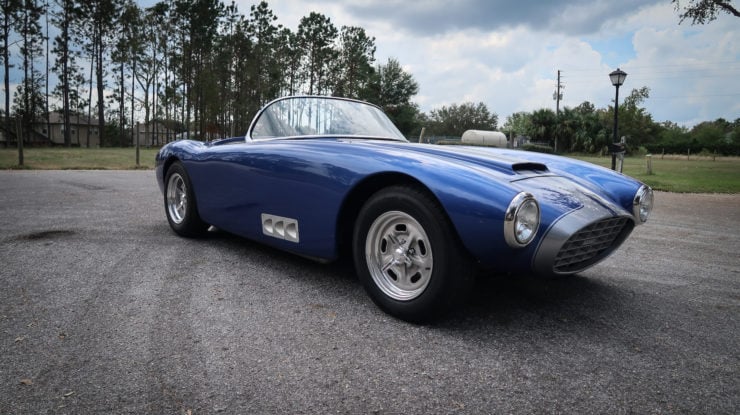

#16 – FERRARI 250 GT SPECIALE BY PININ FARINA
This Pinin Farina Speciale 250 GT was a masterpiece of design, vastly different from the tastefully understated 250 GT Boano. This one-off car features enclosed headlights, lavish but tasteful chrome throughout, a hood scoop to feed the V12, large vents on the side of each front fender, and an almost impossibly elegant side-profile.
Some of the car’s design features would be integrated into the series-based 250 GT Pinin Farina coupes that went into production at the end of 1957, but the Speciale remains unique.
Princess Liliane kept the car in her private collection for 10 years before gifting it to a doctor, from there it passed through a number of hands until it ended up with the current owner – who has had it for 20 years.
See the original article here.
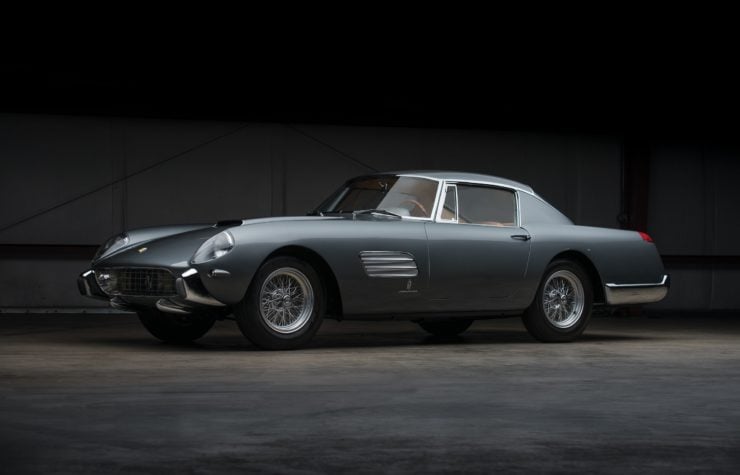
#15 – THE 1969 BAJA PORSCHE 911
The Baja Porsche 911 project was funded by Arc Audio as it was to be their SEMA show car for the 2017 event. Far from being a stationary show car with no actual ability, the Baja Porsche 911 was built to be a highly capable off-road racer.
No corners were cut and no budgetary restrictions interfered with its construction. The original all-steel Porsche 911body was mounted to a tubular steel Baja racing chassis with a tuned 2.3 litre Volkswagen flat-four cylinder engine with four open exhausts exiting above the engine bay, and a four-speed gearbox.
VW flat-four engines have been tried and tested in desert racing for decades, the simple air-cooled motors obviously don’t need heavy liquid cooling systems – eliminating one potential point of failure. Aftermarket parts availability for high-performance VW engines is excellent, with custom builds producing 180 to 200+ hp, up from the ~39 hp they made from the factory.
See the original article here.
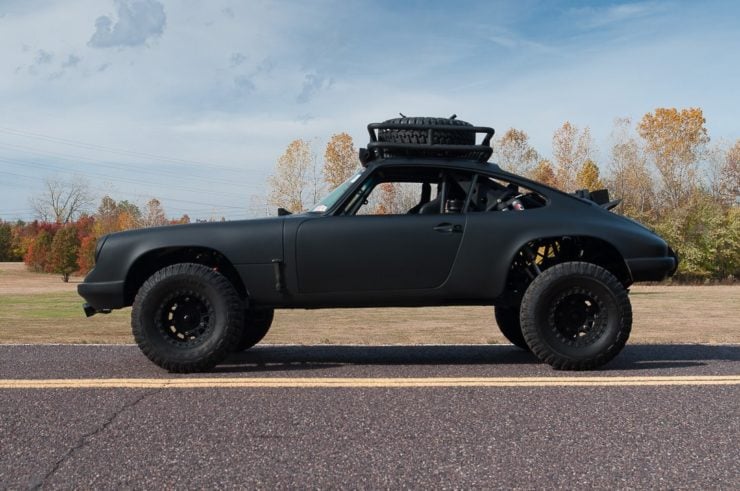
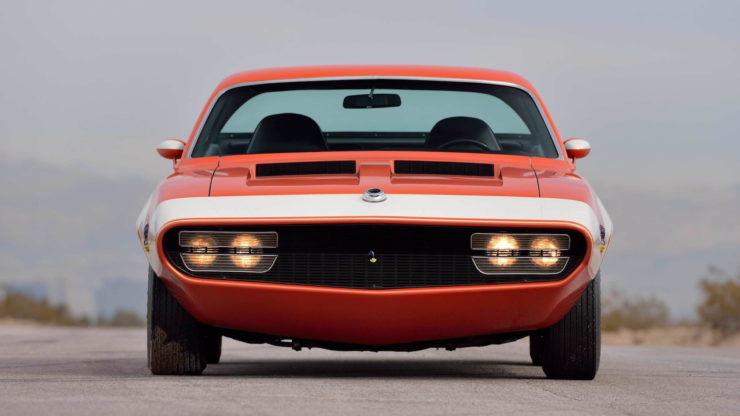
#14 – THE 1971 PLYMOUTH ROAD RUNNER RAPID TRANSIT
The car you see here was widely considered to be the highlight of the 1971 show cars. It was built by Chuck Miller of Styline Custom for Chrysler in 1970 and it’s characterized by its one-off body modifications including a unique front end that extended the car by 6 inches, twin hood scoops, and a tail with an unusual integrated spoiler.
Quad headlights are situated behind a steel grille with integrated headlight covers, and there are 3D vacuum-formed translucent custom Road Runner heads on each corner of the car, which led to the nickname “The Chicken Head Car”.
Under the hood you’ll find a 383 cu. in. V8 with a dual-snorkel air cleaner backed by an automatic transmission. In Road Runner specification this V8 had a 4.25 inch bore, a 3.38 inch stroke, 335 hp at 5,200 rpm, 425 ft lbs of torque 3,400 rpm, a 9.5:1 compression ratio, and a Holley 4-barrel carburettor.
See the original article here.
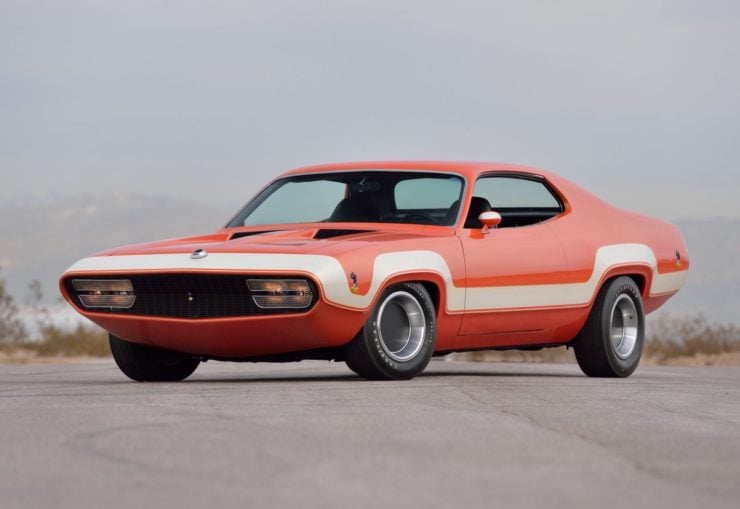
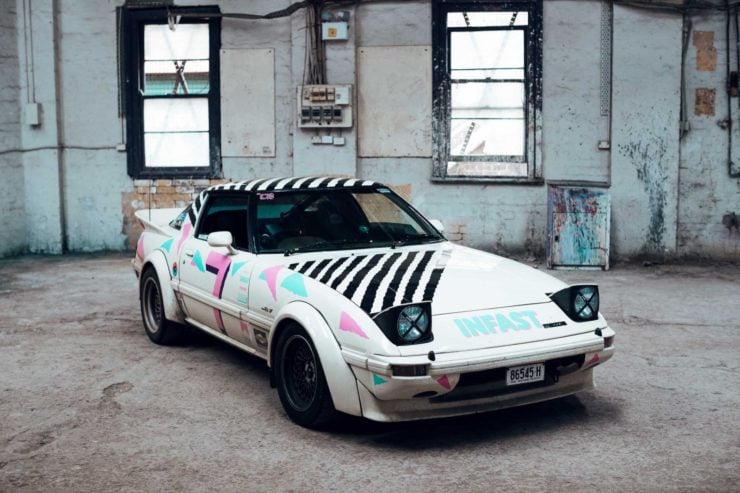
#13 – MARK HAWWA’S 400 HP MAZDA RX-7
Mark’s RX-7 is a 1983 model now fitted with a rebuilt 13B rotary fitted with a GCG T35 turbocharger running 14 lbs of boost and an air-to-air intercooler. Engine management is taken care of by a Motec ECU running Bosch injectors and a Tune Flex able to run E85 or 98 octane fuel.
In its current configuration the car is putting out 400 hp at the rear wheels, this was far too much for the original differential and axle so Mark’s car has a Toyota Hilux rear axle that can get the power to the wheels without grenading itself in the process.
BC racing suspension is used and the car is fitted with an S5 gearbox, and a Group C bodykit similar to that used on the now legendary Allan Moffat car raced in Australia in-period. The car has Techno Toy control arms, tension, and lateral rods, as well as Nitto NT01 semi slick tires and Compomotive wheels.
The car is currently wearing its InFast livery for the InFast Rally, a private endurance rally that is strictly invitation only and takes place annually in Australia – typically covering over 2,000 miles in 7 days.
See the original article here.
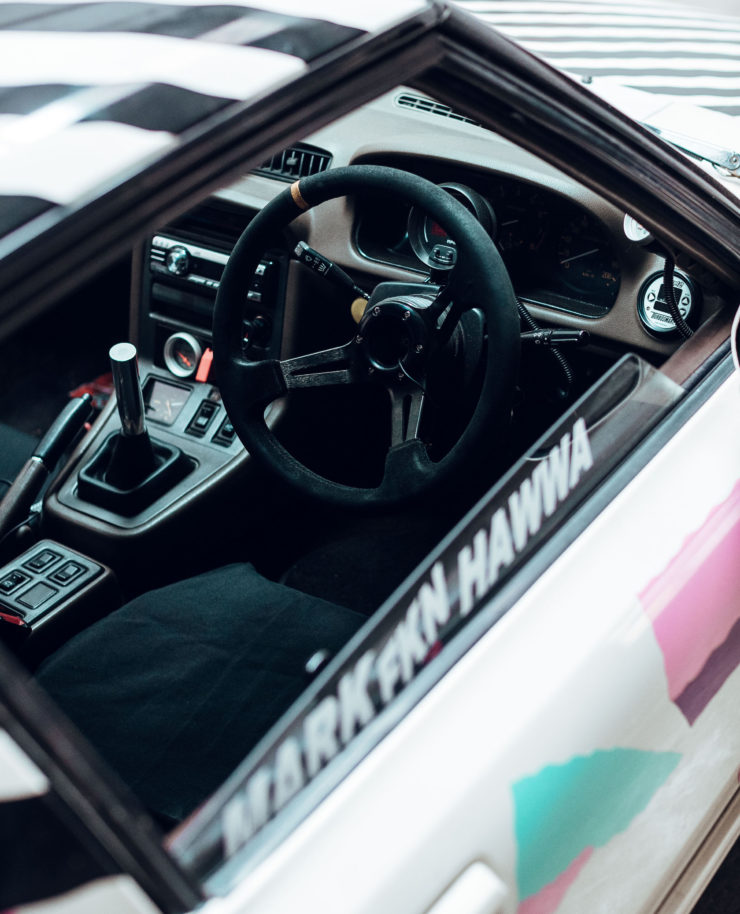
#12 – THE AUTECH ZAGATO STELVIO AZ1
The Autech Zagato Stelvio AZ1 is a Japanese-Italian joint project based on the underpinnings of the 280 bhp turbocharged Nissan Leopard that had been tuned by Autech – Nissan’s in-house tuning division similar to BMW’s M division or Mercedes-Benz’s AMG.
At first glance the car can be mistaken for an Aston Martin V8 Vantage Zagato of the same era, it also predated the Alfa Romeo SZ which shared some stying cues. Unusually, the Autech Zagato Stelvio AZ1 has its front wing mirrors integrated into the body, giving the front end of the car an interesting look whilst at the same time referencing the prominent front wing mirrors that featured frequently on many Japanese cars of the ’60s and ’70s.
The joint project between Autech and Zagato kicked off in 1987, during one of the most significant booms in Japanese economic history. At the time the country was the global leader in electronics production, and a leader in automobile and motorcycle production. Products like the Sony Walkman and the Nintendo Entertainment System were dominating their respective industries and cars like the Toyota Corolla and the Honda Accord were among the best selling in the world.
See the original article here.
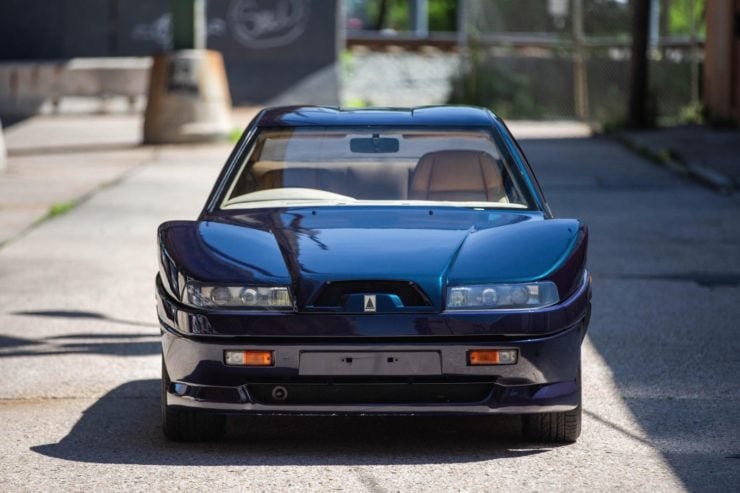
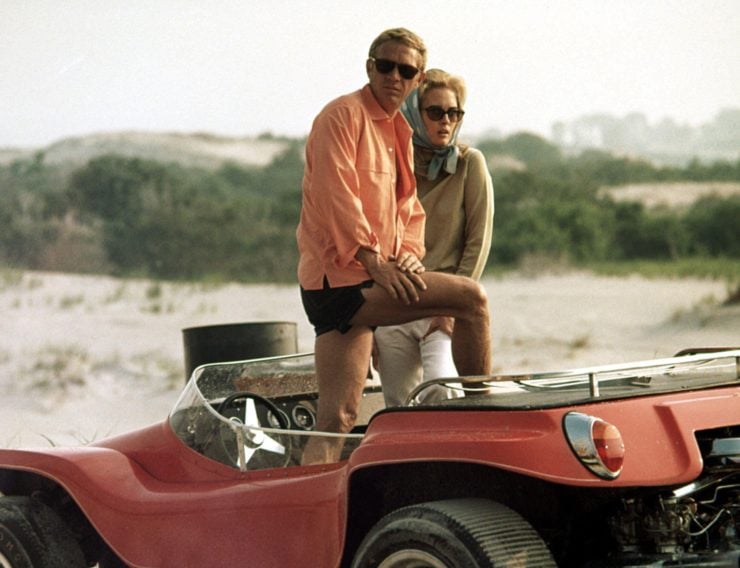
#11 – THE DUNE BUGGY DRIVEN BY STEVE MCQUEEN IN THE THOMAS CROWN AFFAIR
The Meyers Manx dune buggy driven by Steve McQueen in the Thomas Crown Affair is undeniably one of the most famous screen cars of its era. It’s due to come up for open auction with Bonhams in a few weeks time and it’s almost certainly going to become the most valuable Meyers Manx beach buggy in history.
Steve McQueen is one of the best-known petrol head actors of the 20th century, alongside other screen icons like Paul Newman, James Brolin, and James Garner.
It isn’t common knowledge that McQueen was personally involved in the process of building the custom Meyers Manx that was used in the film. He enlisted the help of Pete Condos of Con-Ferr who had previously worked with McQueen to build his custom Jeep.
The two men laid out a specification sheet for an exceptionally fast beach buggy that a millionaire like the fictional character Thomas Crown would drive.
See the original article here.
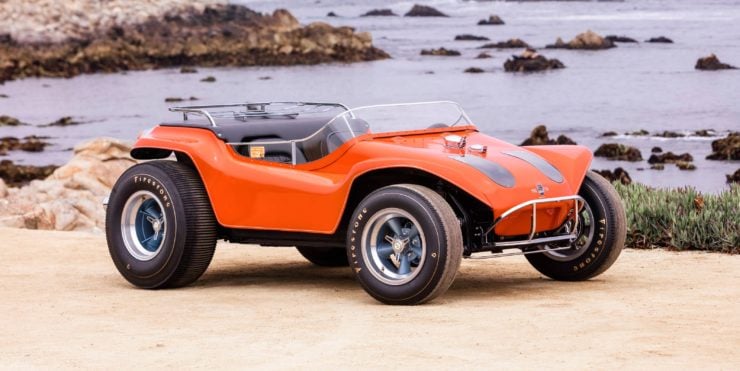
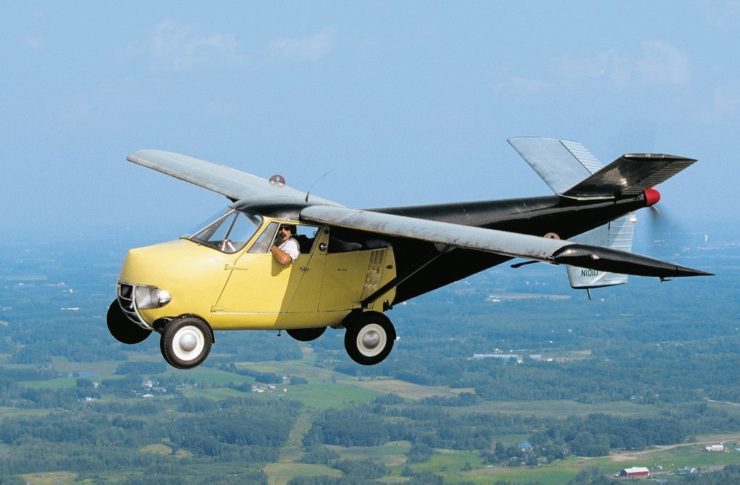
#10 – AN ORIGINAL AEROCAR ONE
This is one of just six original examples of the Aerocar One (some say only five were built), it’s in airworthy condition and ready to fly, and it can also be driven on the roads in the USA.
In order to own an Aerocar One you need both a driver’s license and a pilot’s license, you also need to buy both automotive and aircraft insurance, and you need to pay for both automobile registration and aircraft registration.
Still, if you’re in the market for a flying car with a value approaching $1,000,000 USD it’s doubtful that things like insurance and registration costs are going to be a concern.
See the original article here.
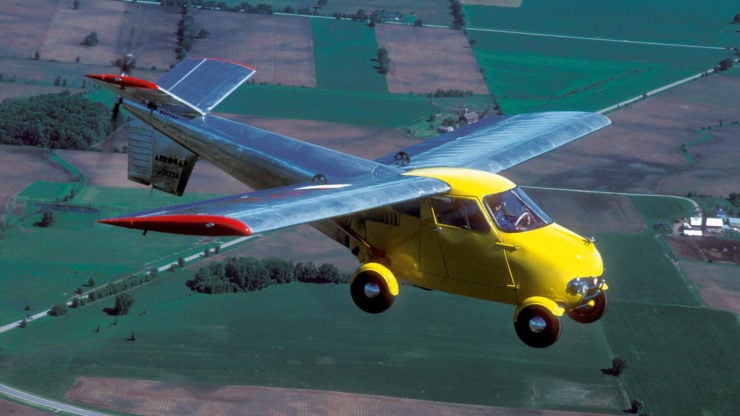
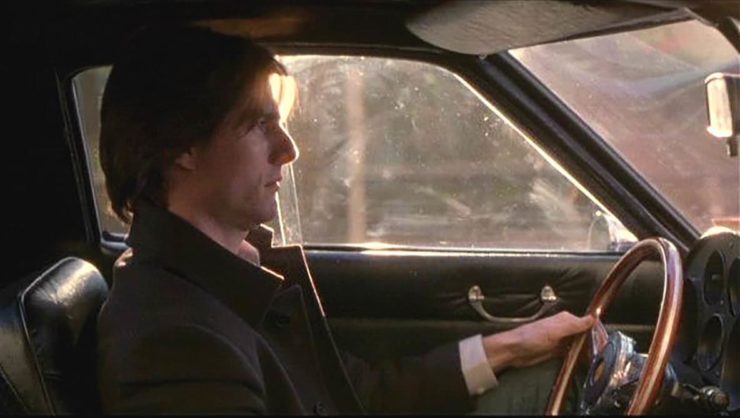
#9 – THE ALPHA ONE GTO DRIVEN BY TOM CRUISE IN VANILLA SKY
The Alpha One GTO is one of the better-known Ferrari 250 GTO replicas, they were based on the Datsun Z-car platform, typically the 240Z and 260Z, with some using the later 280Z.
Many owners ordered their cars as turn key vehicles from Joe Alphabet’s company which allowed them to specify a wide variety of options including Chevy V8s, uprated suspension and brakes, automatic or 5-speed manual transmissions, and an array of paint colors.
This particular Alpha One GTO is doubtless the most famous of them all, it was used in the 2001 blockbuster film Vanilla Sky with Tom Cruise behind the wheel. For car people the scenes with the 250 GTO driving around the abandoned streets of New York City were some of the most memorable in the film.
See the original article here.
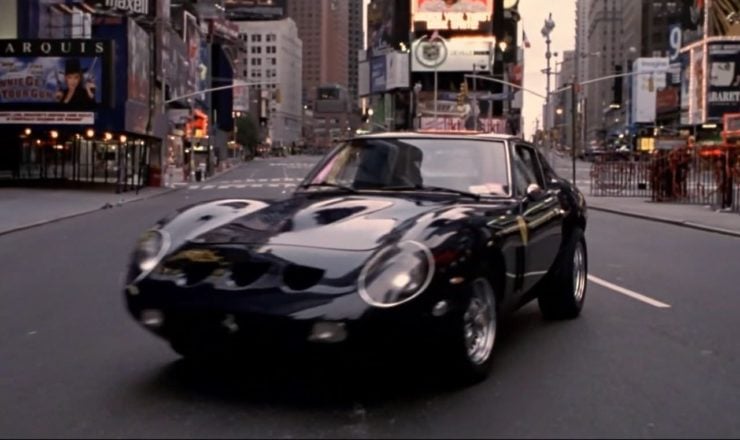
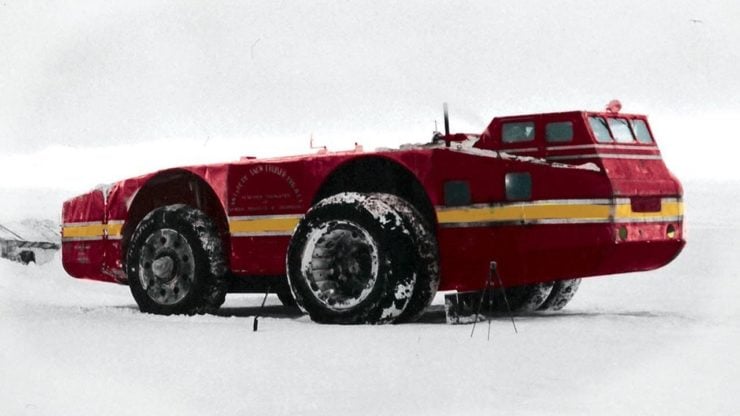
#8 – THE SNOW CRUISER – ANTARCTICA’S ABANDONED BEHEMOTH
The Snow Cruiser – Antarctica’s Abandoned Behemoth is a short documentary that gives a concise history of one of the most unusual land-based vehicles ever built.
The film uses a combination of archive video footage and still images to tell the story of the Snow Cruiser, it’s a remarkable tale of ambition and engineering that resulted in the Snow Cruiser being designed and built in Chicago between 1937 and 1939 before being driven on public roads to Boston, over 1,000 miles away.
In Boston it would be loaded onto a ship and taken to Antarctica by way of the Panama Canal and New Zealand. I won’t go into what happened next as I don’t want to ruin the film.
See the original article here.
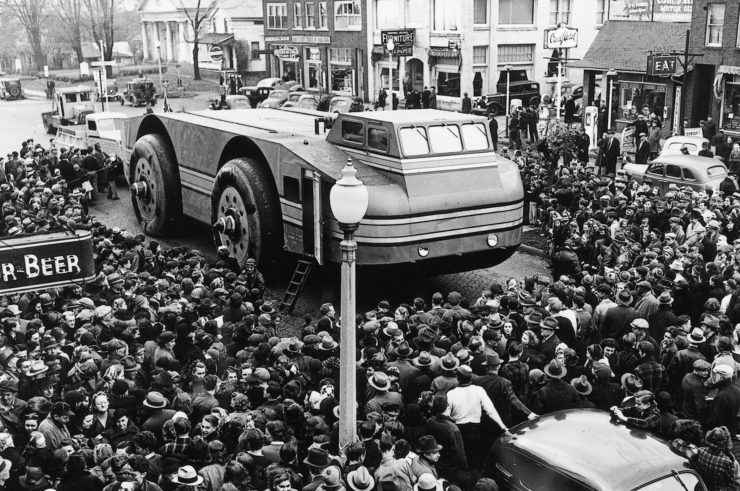
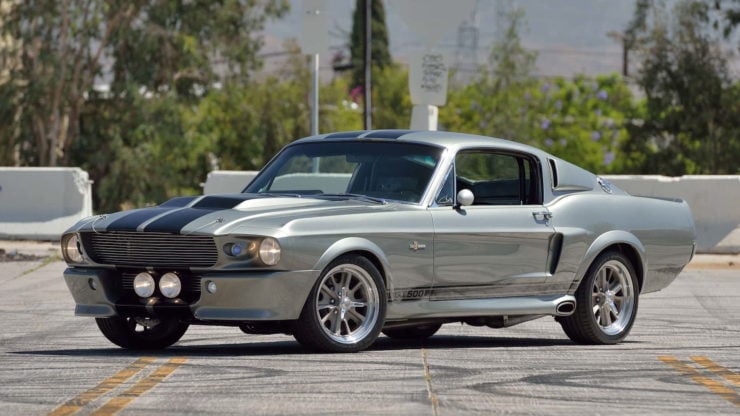
#7 – ELEANOR FROM GONE IN 60 SECONDS
The 2000 film Gone in 60 Seconds was a big-budget remake of a 1974 H.B. Halicki film of the same name, which featured a similar plot, plenty of chase scenes, and of course, Eleanor. The 1974 film was made on a far smaller budget and it’s well worth a watch if you have the time. Of course the remake from 2000 was a big budget Hollywood film featuring an all-star cast including Nicolas Cage, Angelina Jolie, Giovanni Ribisi, Christopher Eccleston, Robert Duvall, Vinnie Jones, and Will Patton.
The modern Gone In 60 Seconds was made with a budget of 90 million, it received mixed reviews from critics however the public loved the film, and it was a significant commercial success – taking in over a quarter of a billion dollars at the box office globally.
Some have attributed the surge in interest surrounding restomod vehicles to Eleanor, Chip Foose’s dream Shelby GT500 evocation, and it’s certainly likely. Many restomods follow the styling cues laid out by Foose with Eleanor, and American muscle cars like the Mustang are popular targets for restomodders.
See the original article here.
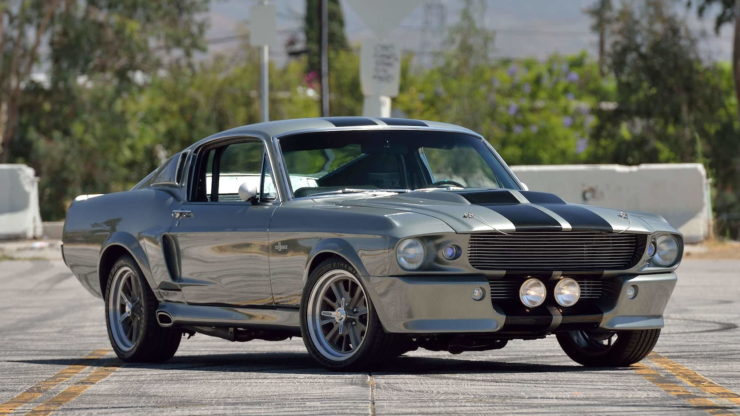
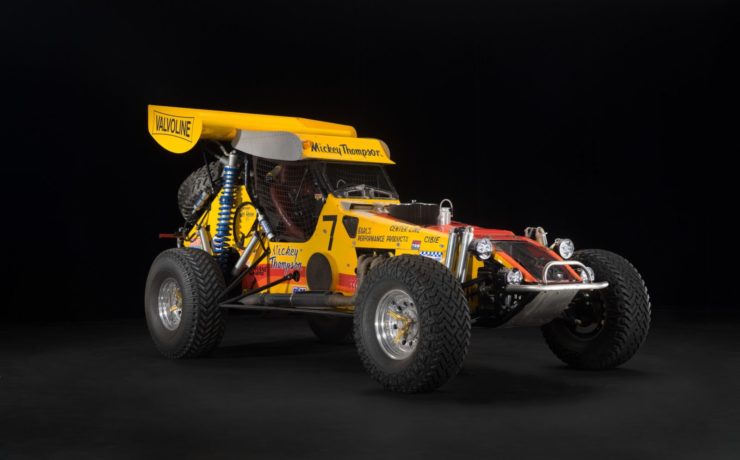
#6 – MICKEY THOMPSON’S ORIGINAL CHALLENGER IV BUGGY
In 1977 Mickey Thompson (MT) set out to build one of the most technically advanced off road race vehicles ever created. While the fastest off road cars on the dirt (at the time) were Class 1 Unlimited Buggies based off of VW suspension, with a whopping 10 to 12″ of wheel travel, and 2276cc VW motors, Mickey decided to “Super Size” his ride with an American V8 and 15 to 18″ of wheel travel.
Mickey started with a chassis (known as Challenger IV or CH4) built by Smokey Allerman, who was famous for building sprint cars back then. The car looked a lot like a sprint car but the suspension was altered to get more wheel travel out of it with custom built A-arms and a 3 link rear suspension arrangement.
While the chassis was built by Allerman, Mickey had John House (MT’s crew chief), son Danny Thompson, and Bruce Parrish finish the racer and drop in a 383 stroker Chevrolet V8 engine pulled from one of his old Indy cars, along with a 2 speed Powerglide automatic transmission.
See the original article here.

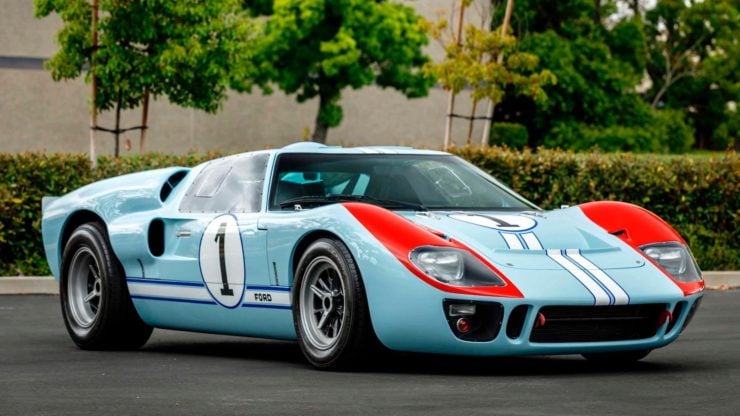
#5 – THE KEN MILES CAR FROM FORD V FERRARI
The Superformance Ford GT40 you see here is a 1966 MkII model, it was built from scratch by the team at Superformance in Irvine, California.
Rich MacDonald of Superperformance reached out to representatives at Fox Studios about the possibility of featuring the cars in the new film. He explained how historically accurate the company’s replicas are, and the filmmakers clearly agreed, as they used two of them with liveries painted to match both the black GT40 driven by Bruce McLaren and Chris Amon, as well as the memorable blue/white/red livery used on the Ken Miles and Denny Hulme car.
Unlike the original car however, this one is now fitted with a prodigious Roush 427IR V8 stroked out to 511 cu. in., now producing 604 hp and 572 ft lbs of torque. Looking inside the car it’s clear that Superformance went to great lengths to ensure that every detail was tended to in order to make it as authentic as possible, the toggle switches and screws, the interior materials, and the other small details are exemplary.
The car you see here is the one used by Christian Bale (and the stunt drivers) in the film, it’s been signed by Ken Miles’ 1966 crew chief, Charlie Agapiou, and Peter Miles, Ken Miles’ son, and it’s been displayed at numerous red carpet events alongside the stars of the film, on ESPN, and on CBS Sunday Morning.
See the original article here.
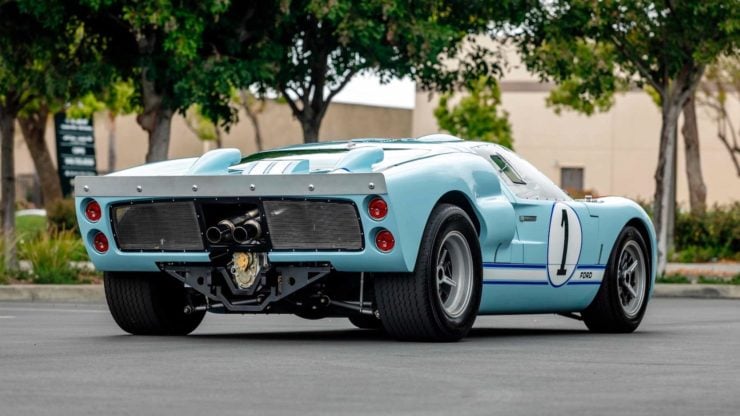
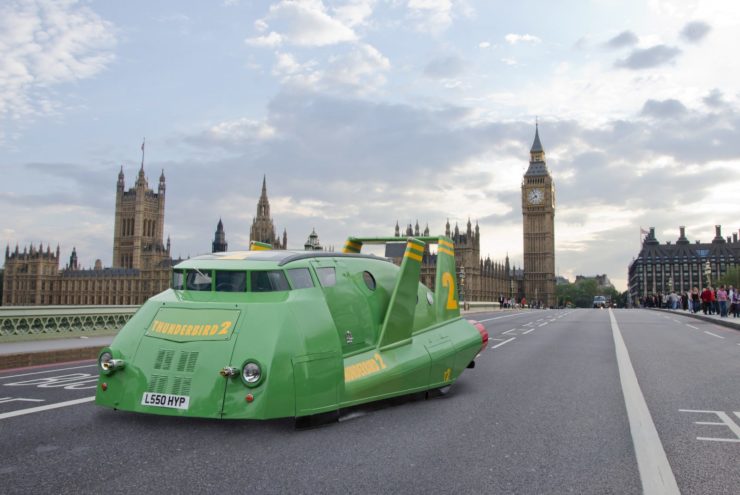
#4 – THUNDERBIRD 2 – THE BEST CAMPER VAN ON EARTH
The Thunderbird 2 you see here is a 100% road-legal conversion with a bespoke metal body based on a 1994 Toyota Previa (2438cc petrol/automatic). It has eight windows at the front, the two in front of the driver have windscreen wipers, and there are two circular ports on either side.
Entrance and exit is by gull wing doors on either side with gas struts and a pull handle, the interior is color-matched to the exterior, and it has all the requited headlights, indicators, and brake lights to keep the boys in blue happy.
In the back you’ll find a a Thunderbirds themed bed and a roof-mounted DVD system (so you can watch Thunderbirds obviously) and your view outside is provided by the circular portholes.
It might not be the most practical camper van for sale but you’d have no problem at all making friends when you roll into the campground. Alternatively, it’d make an excellent novelty AirBnB listing.
See the original article here.
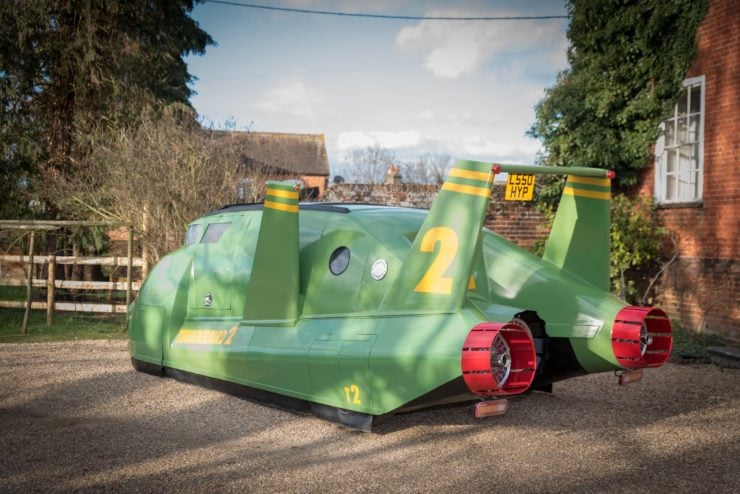
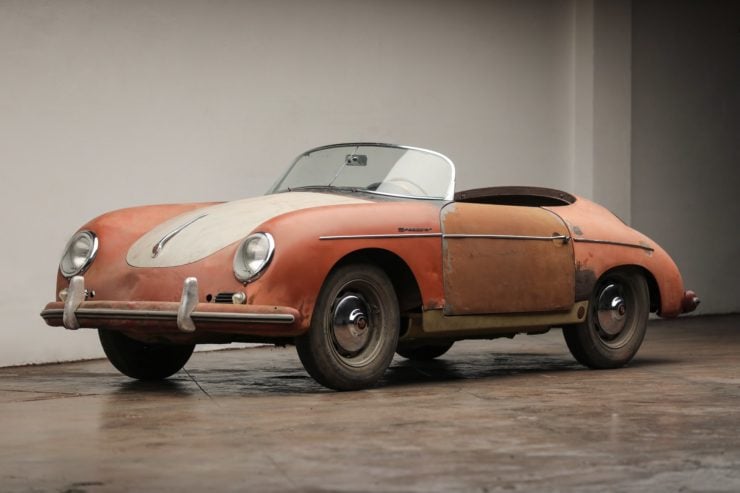
#3 – PORSCHE SPEEDSTER PROJECT CAR
As far as we can tell, this Porsche Speedster is the best Porsche project car for sale in the world at this moment. I know that’s a big claim to make, however this is an authentic numbers-matching Speedster – one of the most important Porsches of its era. It’s being offered with no reserve out of the private Shook Family collection in Corpus Christi, Texas.
The Speedster is in running, driving, and stopping condition. It clearly needs a lot of work but there’s been increasing interest in recent years from enthusiasts and collectors in cars that are totally original and unrestored – as that authenticity is becoming increasingly rare. You can restore a car as many times as you like, but it’s only an unrestored original once.
The story behind the creation of the Porsche Speedster is fascinating. It was conceived not by Porsche but by the legendary Austrian/American auto importer named Max Hoffman. As a European who had immigrated to the United States, Hoffman had unique insight into how to talk to the European automakers, and he had insight into what Americans really wanted to drive.
See the original article here.
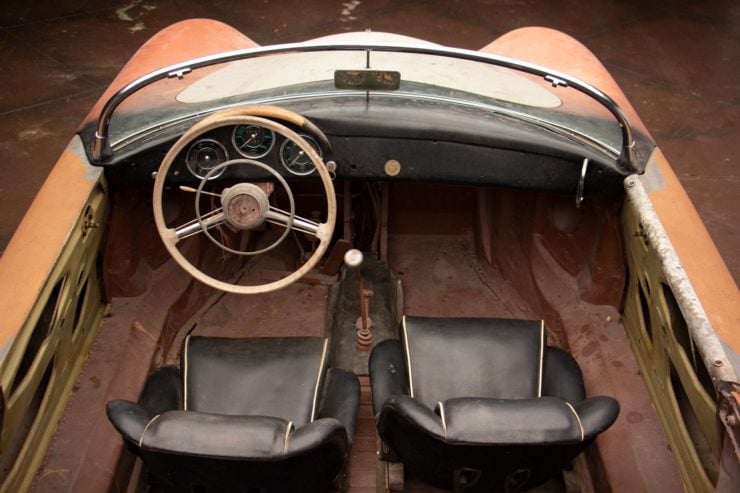
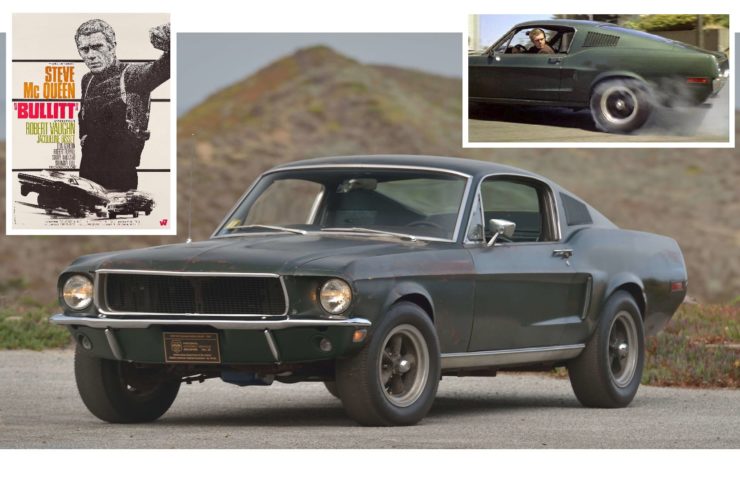
#2 – THE ORIGINAL STEVE MCQUEEN BULLITT MUSTANG
This is the hero car from the 1968 Steve McQueen film “Bullitt”, it’s a Highland Green 1968 Ford Mustang GT and since the film was released this car has become one of the most famous Mustangs in history, possibly even the most famous outright.
Before filming began, two Highland Green 1968 Ford Mustang GTs were supplied by Ford who were hoping to capitalize on a little almost-free publicity from the film. Bullitt has been sending Mustang buyers to Ford now for over 50 years, including a number of official Ford Mustang Bullitt special models with the most recent being in 2018, so it was undoubtably a good investment.
Interestingly, McQueen partnered up with real-life San Francisco Inspector Dave Toschi, it was Toschi who inspired McQueen to wear a shoulder holster, and Toschi later partner with Inspector Bill Armstrong as the lead San Francisco investigators of the Zodiac Killer murders. These murders began shortly after the cinematic release of Bullitt.
See the original article here.
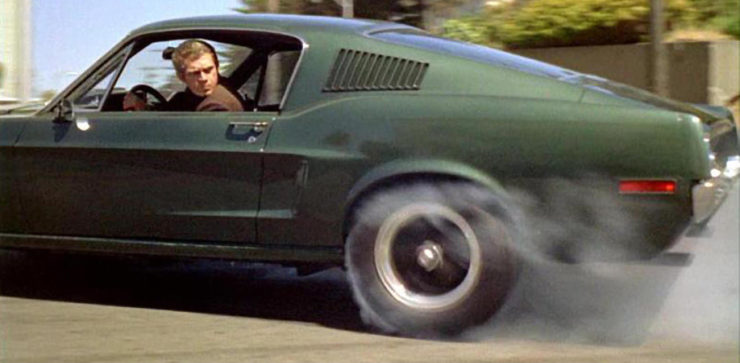
#1 – PATRICK DEMPSEY’S 420 HP 1965 FORD MUSTANG FASTBACK
In 2008 racing driver (and actor) Patrick Dempsey worked closely with the team at Panoz to develop what he believed was the perfect 1965 Ford Mustang Fastback.
The project had no limit on price, the key was to build the greatest custom ’65 Fastback of all time. By the time the car was complete over 3,900 hours of labour had been spent on it, as well as over $300,000 USD.
Dempsey is best known for his role as neurosurgeon Derek “McDreamy” Shepherd in the television series Grey’s Anatomy and his slew of leading film roles, but in the motor racing community he’s known as a genuinely talented racing driver in the vein of Paul Newman.
In interviews Dempsey has said he’d quit acting and race full time if he could, he’s competed at the 24 Hours of Le Mans, the Rolex 24 at Daytona, and Ensenada SCORE Baja 1000 off-road race.
See the original article here.
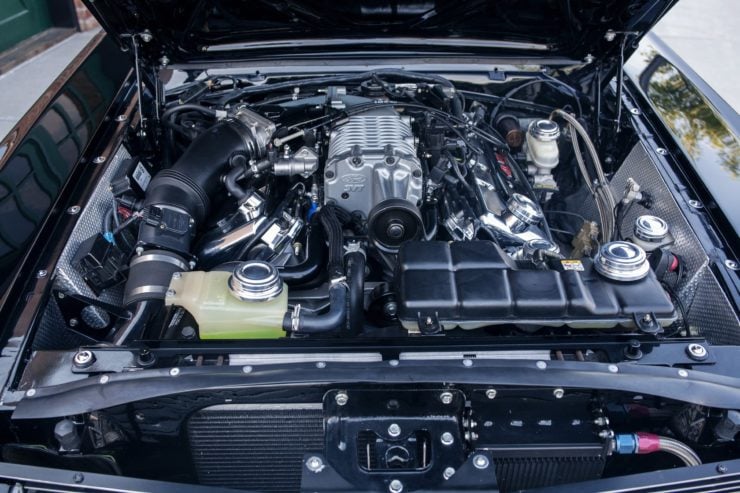
HONORABLE MENTION : THE SHELBY DE TOMASO P70
Carroll Shelby wanted the new car to be fitted with the lightest possible 7 litre V8, de Tomaso and his team believed they could stretch the capacity of the 289 cu. in. (4.7 litre) Ford V8 to 427 cu. in. (7 litres). Sadly this turned out to be physically impossible as there was insufficient room to increase capacity by boring the cylinders and fitting a stroker crank.
The original design of the body by Peter Brock had been sent from Shelby in California to the coachbuilder in Italy, Shelby wasn’t impressed with the finished product so he sent Brock to Italy to personally supervise the building of a new body with the team at Carrozzeria Fantuzzi, a Modena-based coachbuilder.
Just as Brock was in the process of fitting the completed body to the second iteration of the Vallelunga-derived chassis he received a call from California, it was Carroll telling him to get on a plane and come home. The project was being cancelled as Shelby had just been hired by Ford to run a competition campaign fielding some new sports racing cars at endurance races like the 24 Hours of Le Mans, fielding a racing car called the Ford GT40.
See the original article here.
